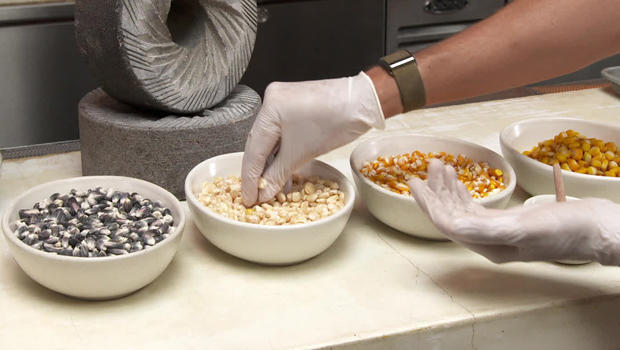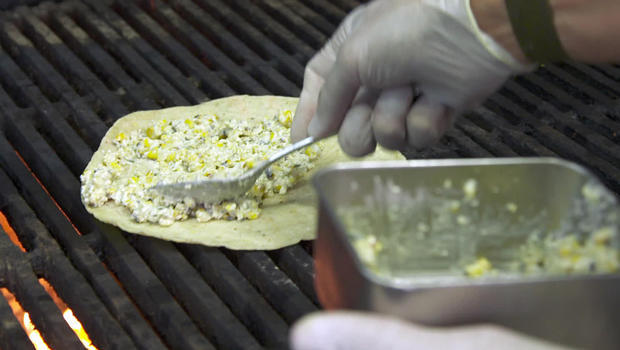The Warrensburg, Ill. corn festival was more corn than festival this year due to COVID-19. There weren't the usual big-name bands, but there was LOTS of corn, which, after all, is the point of a corn festival.
And, some might say, the point of summer.
Corn is certainly the point of summer at the Harbes Family Farm in Mattituck, on New York's Long Island, where you can buy it by the dozen, or the bushel to take home. Or, you can stick around and eat it roasted. And have you ever had corn ice cream?
In 1989, Ed Harbes, a 12th-generation farmer, and his wife, Monica, decided raising sweet corn was a better way to support eight kids than potatoes, and switched.
This is truly the farm that corn built, now a farm "experience," complete with several corny things to do, including three corn mazes in the fall.
"Some people just wanted to spend some extra time in the country," Ed told correspondent Martha Teichner. "Have some country food with their family, spend an hour or two and head off wherever they want."
The Harbes Family Farm produces half a million ears of sweet corn a summer. Impressive? Here's another number: 92 million acres, an area nearly the size of Montana – that's how much corn is planted nationwide, only around 1% of it sweet corn. The rest is field corn mainly used for animal feed, ethynol (in gas), or as high-fructose corn syrup sweetener.
According to Mexican entrepreneur Francisco Musi, corn has been around for five to six thousand years. Corn was domesticated by old Mesoamericans out of its wild ancestor, which is teosinte.
Corn is the "corn-erstone" not only of Mexico's cuisine, but of its history, mythology and art. "If you hold a tortilla," said Musi, "you're holding 3,000 years of history in your hand."
Musi and his partners tracked down a few dozen farmers who still grow increasingly scarce traditional varieties of corn on tiny plots throughout Mexico. They started a company, Tamoa, hoping that by selling this corn to restaurants around the world, they could improve the farmers' lives and convince them to continue raising it.
Justin Bazdarich co-owns Oxomoco, a Michelin-starred Mexican restaurant in Brooklyn, which uses Tamoa's corn. "The corn fits in as a backbone to the restaurant," he said.
There, the Tamoa corn is ground; then, this mushy dough, called masa, is formed into tortillas.
Bazdarich demonstrated making his corn-on-corn tortilla version of an Oaxacan street snack, a Market Corn Tlayuda.
"We've taken the fresh corn, added it with all those ingredients – cotija, mayo, epazote, herb and lime – spread that on, added the cheese. And then we add some dollops of our Oxomoco hot sauce – that's guajillo chiles, garlic, oil – so, just couple of dollops of this throughout."
RECIPE: Market Corn Tlayuda, from Oxomoco
Squeezing lime over the dish, Bazdarich said, "We try to make little flavor explosions of things."
Teichner just had to sample the delicious tlayuda: "As my father always used to say, 'Guess I'll have to sacrifice myself.' Somebody's got to do it!"
For more info:
Story produced by Aria Shavelson. Editor: Steven Tyler.
See also:
The Link LonkAugust 30, 2020 at 08:52PM
https://ift.tt/3gFxVt9
A world of corn, from farm to table - CBS News
https://ift.tt/3gguREe
Corn





No comments:
Post a Comment